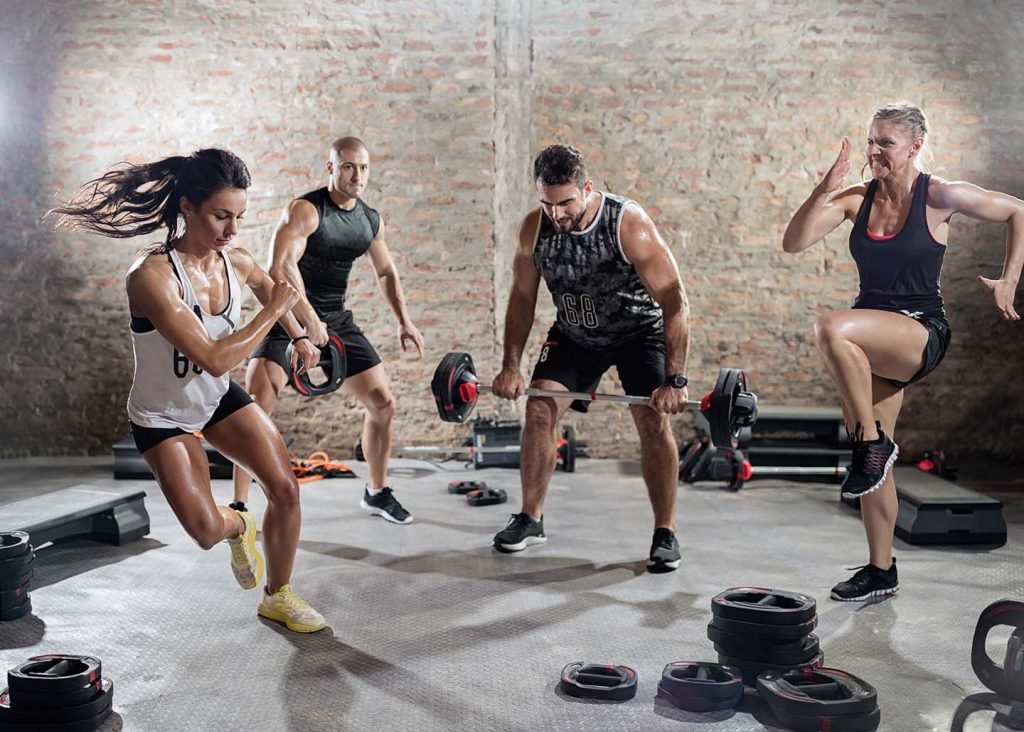High-Intensity Interval Training (HIIT) has gained immense popularity in the fitness world for its efficiency and effectiveness. This workout method involves alternating between short bursts of intense exercise and brief recovery periods. The result? A powerful workout that not only burns calories but also improves cardiovascular health and boosts metabolism. The beauty of HIIT lies in its adaptability. Whether you’re a seasoned athlete or a fitness newbie, HIIT can be tailored to fit your individual fitness level and goals.
Understanding HIIT
HIIT workouts are designed to maximize your workout efficiency in a condensed amount of time, typically lasting anywhere from 10 to 30 minutes. The core principle is to alternate between intense bursts of activity, pushing your body to its limits at 80-90% capacity, and periods of rest or low-intensity recovery. This cycle can involve intervals as short as 15 seconds for high-intensity work followed by similar or slightly shorter rest periods. A typical HIIT workout will consist of multiple rounds of these intervals, often 4 to 6, but you can adjust the number of rounds or rest time based on your fitness level. Don’t forget to warm up with light cardio and dynamic stretches to prepare your body, and cool down with static stretches afterwards to aid recovery.
Benefits of HIIT
1. Efficient Calorie Burn

HIIT workouts are like hitting the fast-forward button on your calorie burning. Unlike traditional steady-state cardio where your body settles into a comfortable rhythm, HIIT’s secret lies in its constant push and pull. The intense bursts of activity, where you reach 80-90% of your capacity, skyrocket your heart rate. This rapid increase forces your body to work harder to deliver oxygen to your muscles, burning a significant amount of calories during the work interval itself.
But the beauty of HIIT doesn’t stop there. Even during the recovery periods, your body isn’t taking a complete break. It’s still working hard to catch its breath and replenish the energy stores you just depleted. This process, called Excess Post-exercise Oxygen Consumption (EPOC), creates an afterburn effect that extends your calorie burning well beyond the cool-down. For up to 24 hours after your HIIT session, your body is working in overdrive to return to its baseline state, burning additional calories in the process.
2. Improved Cardiovascular Health
HIIT workouts aren’t just about burning calories; they are a powerhouse for improving your cardiovascular health. Imagine your heart and lungs as the engine and air intake system of a car. Traditional steady-state cardio exercises them at a constant pace, much like cruising on a highway. HIIT, on the other hand, is like a high-speed race track workout. The intense intervals elevate your heart rate significantly, forcing your heart to work harder and pump more blood throughout your body with each beat. This strengthens your heart muscle, akin to how a car engine becomes more powerful by enduring high-performance conditions.
But the benefits of HIIT extend beyond just a stronger heart. HIIT also enhances your lungs’ efficiency in delivering oxygen-rich blood to your muscles. This improved oxygen delivery boosts your overall stamina and endurance, making everyday activities and other forms of exercise feel easier. Additionally, the frequent shifts between high and low intensity in HIIT help train your cardiovascular system to recover more quickly, which is beneficial for both athletic performance and daily life.
3. Metabolic Boost
HIIT workouts aren’t just about burning calories during the exercise; they have a lasting impact on your metabolism thanks to their influence on human growth hormone (HGH). As we age, HGH production naturally declines, leading to a slower metabolism and making it harder to burn calories throughout the day. HIIT workouts can counteract this decline by stimulating the release of HGH, which has a two-fold effect. Firstly, HGH promotes muscle growth and repair, and since muscle tissue burns more calories at rest compared to fat tissue, increasing your muscle mass through regular HIIT workouts elevates your resting metabolic rate. This means you burn more calories even when you’re not actively exercising, giving your weight management efforts a boost.
Secondly, HGH signals your body to tap into stored fat reserves for fuel. During intense HIIT intervals, your body initially burns through readily available carbohydrates for energy. However, with HGH in the mix, it becomes more efficient at accessing and utilizing fat stores, particularly during recovery periods and even after your workout is complete. This allows you to burn a higher percentage of calories from fat, further contributing to overall calorie expenditure.
How to Do HIIT

1. Choose Your Exercises
Select exercises that engage large muscle groups and can be performed with high intensity. These exercises should be dynamic and capable of raising your heart rate quickly. Examples include:
- Sprinting: A full-speed run that engages your leg muscles and cardiovascular system.
- Jumping Jacks: A plyometric exercise that combines cardio with full-body movement.
- Burpees: A full-body exercise that combines a squat, jump, and push-up, making it highly effective for HIIT.
- Kettlebell Swings: This exercise targets your core, back, and leg muscles, providing both strength and cardio benefits.
2. Warm-Up
Begin with a dynamic warm-up to prepare your muscles and joints for the intense workout ahead. A proper warm-up increases blood flow to your muscles, enhances flexibility, and reduces the risk of injury. Include movements like:
- Jogging in Place: Light jogging to gradually elevate your heart rate.
- Leg Swings: Swing your legs forward and backward to loosen your hip flexors and hamstrings.
- Arm Circles: Rotate your arms in circular motions to warm up your shoulders and upper body.
3. Work and Rest Intervals
Alternate between 20- to 60-second intervals of high-intensity exercise and 10- to 60-second intervals of rest or low-intensity activity. The ratio of work to rest can vary based on your fitness level and goals. For example:
- Beginners: Start with a 1:2 ratio, such as 20 seconds of high-intensity exercise followed by 40 seconds of rest.
- Intermediate: Progress to a 1:1 ratio, such as 30 seconds of high-intensity exercise followed by 30 seconds of rest.
- Advanced: Aim for a 2:1 ratio, such as 40 seconds of high-intensity exercise followed by 20 seconds of rest.
4. Repeat
Aim for 4 to 10 intervals depending on your fitness level and workout duration. As you progress, you can increase the number of intervals or the intensity of your exercises. For instance:
- Beginners: Start with 4 intervals and gradually increase to 6 or 8 as your fitness improves.
- Intermediate: Perform 6 to 8 intervals, increasing intensity by adding more challenging exercises.
- Advanced: Aim for 8 to 10 intervals, incorporating complex movements and reducing rest periods to maximize intensity.
5. Cool Down
Finish your workout with a cool-down session to lower your heart rate and stretch your muscles. Cooling down helps prevent muscle stiffness and promotes recovery. Focus on gentle stretches for the muscles you targeted during your workout, such as:
- Hamstring Stretch: Sit on the floor and reach for your toes to stretch your hamstrings.
- Quadriceps Stretch: Stand on one leg, pulling your other foot towards your buttocks to stretch your quads.
- Shoulder Stretch: Cross one arm over your chest and use your other arm to gently pull it towards you, stretching your shoulder muscles.
Conclusion
High-Intensity Interval Training (HIIT) offers a powerful and efficient approach to fitness that can fit into even the busiest schedules. By alternating between periods of intense exercise and short recovery, HIIT provides an effective way to burn calories, enhance cardiovascular health, and boost metabolism. Its adaptability makes it suitable for individuals at all fitness levels, allowing for personalized modifications based on specific needs and goals.
Incorporating HIIT into your routine can lead to significant improvements in physical fitness, from increased calorie burn and enhanced cardiovascular performance to a metabolic boost that supports long-term weight management. By following the steps outlined above, from selecting the right exercises and managing work-to-rest ratios to ensuring proper warm-up and cool-down, you can maximize the benefits of HIIT and integrate it seamlessly into your lifestyle.